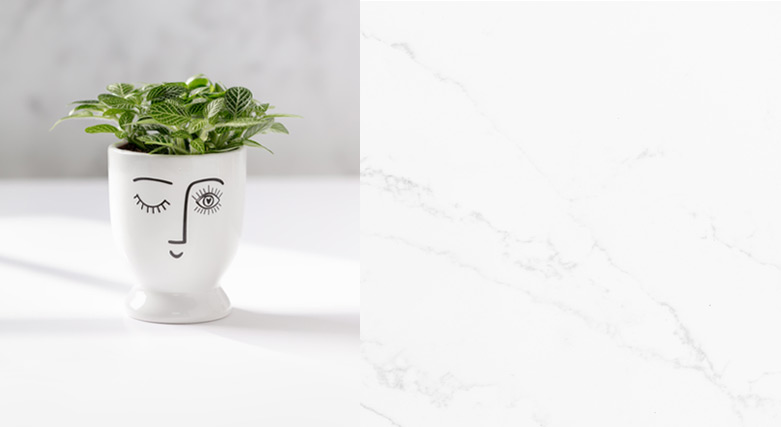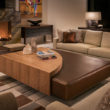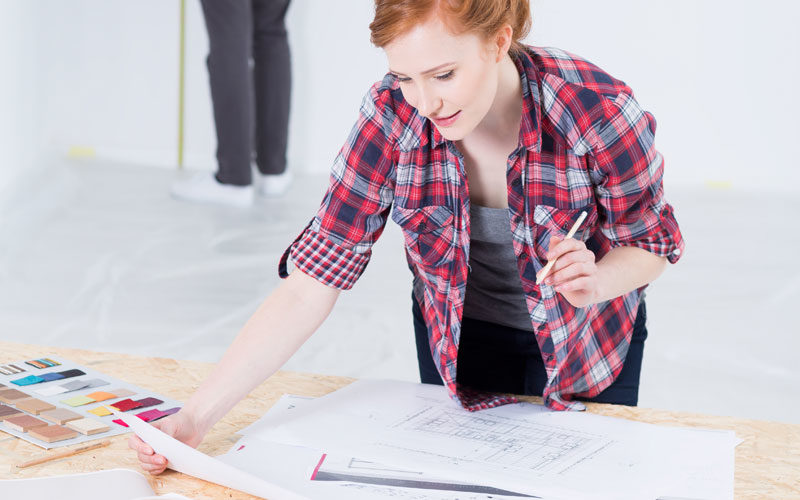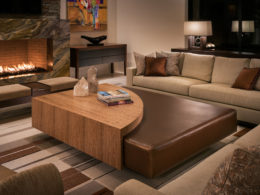If you are currently an interior designer unhappy with your job, or are new to the industry, you have come to the right place! Luckily for you, our industry is filled with possibilities. You could switch from residential to commercial, commercial to residential, or you may even consider starting out on your own. Indeed, this is a big step, which requires research and preparation, but is perfectly doable. Read on to know more about working for small and large residential design studios and the pros and cons of starting your own interior design business.
Employee of an Interior Design Studio
If you are an employee of an interior design studio, the choices are often between working for either a small residential studio or a larger commercial studio. Each model has different kinds of responsibilities with project involvement, different levels of creative freedom, and of course, different pay structures. Let us look at these various aspects of being an employee in a design studio.
Small Residential Studio
Working in a small residential studio can give you many of the benefits of working in your own business without the responsibilities and costs. The responsibility in terms of project involvement and the level of creative freedom is fairly close to that of an independent designer. Unfortunately, the similarities fall short in the salary and design fee departments.
Responsibility and Project Involvement
For the average residential interior designer employed with a small residential studio, project involvement is what typically excites them. The designers will usually visit the job site for inspiration or information, meet with clients, and have their hand in many different aspects of the projects (drafting, specifications of furniture and finishes, custom cabinetry design, etc.).
Creative Freedom
While an interior designer who works under the management of a senior designer will not have all of the freedom of a freelance designer, they typically have a great deal of room to develop creative, out-of-the-box solutions.

Salary and Design Fees in a Small Residential Studio
As with any job, salary depends on the experience of the worker and the company. An entry-level residential designer’s average base salary is $50,000 (source). This doesn’t include bonuses and benefits. Design fees are entirely up to the studio and do not reflect the money received by the designer.
Large Commercial Studio
Being a designer for a large commercial studio is not “better” or “worse” than being a designer for a small residential studio. Still, there are many differences in the dynamic of the career and day-to-day workload.
Responsibility and Project Involvement
Interior designers working for large commercial studios deal more with the actual designing while management and other departments handle most, if not all, of the dealings with the clients. They will also typically work in large groups, with each group assigned a specific aspect, making all projects a collaborative effort.
Freedom of Creativity
Teamwork and collaborative efforts, not to mention a heavy influence from senior designers and management, leave only so much room for creativity. As a result, creativity is achievable but is more challenging to incorporate.
Salary and Design Fees
The average base salary for entry-level commercial designers is about $34,000 (source) plus benefits. Also, like the residential studio, you have no control over the design fees, and you are paid based on a fixed salary or hours worked rather than the jobs coming in.

Self-Employed Residential Designer
The decision-making process of starting a business can be equally stressful and exciting. The decisions you make at the beginning can shape the dynamic of your future business. For example, you will have to consider the start-up costs, what advertising and marketing you would like to invest in, how you will deal with liabilities, how you will be compensated for projects, how you will procure clients, your project involvement, etc.
Start-Up Costs
Owning any business will require start-up costs to get the operation rolling. Interior design businesses are no exception. You will need to acquire a business permit, as well as insurance. You will also need to purchase the required technology, for example, BIM (Building Information Modeling) software, documentation software, plotters and printers, computers, etc. You will also need to procure marketing and advertising materials such as a logo, business cards, a website, etc. And, marketing isn’t a one-time effort. You need to have a consistent marketing plan so that your business thrives over time. If you choose to work away from home or take on employees, those are additional costs to consider.
Legal Responsibilities and Liabilities
Being an interior designer has more responsibilities than most people realize, and owning a studio means that you will need to protect yourself in case of any legal trouble. As a designer, legal troubles include a grumpy client charging you with professional negligence (in which a client believes you haven’t done your job), breach of contract (in which you do not fulfill what your contract states), injury or harm (in which your design activities are directly responsible for the damage of a person or persons- this will usually be the case if something you specified was not code-compliant), or copyright (in which a designer directly duplicates another’s intellectual property without permission and compensation). Copyright issues can even ensue if you were to replicate one of your own designs in which a client wanted their design to be unique.

Project Compensation
Possibly, one of the most common motivations for being a self-employed interior designer is having the ability to choose the way and amount you will be compensated for your projects. However, it can be easy if you try to stick to one of these well-known billing methods:
- Hourly Fee Method
- Fixed Fee Method
- Cost Plus Percentage Markup Method
- Square Foot Method
Learn more about how to charge your clients for your interior design services.
Client Procurement
Client procurement has a lot to do with the way that you do your marketing. Being passive about your marketing could be detrimental to your business. There are many ways to market your business. Social media can be a great way of getting your work out there. Facebook and Instagram are filled with interior designers tagging their photos and projects with the best keywords to get their designs into the potential clients’ social feeds.

Not to mention, Facebook and Instagram’s paid advertising has also become a game-changer in marketing interior design. Pinterest, too, can be a great place to post your work. If you post aesthetically pleasing photos with optimal keywords on Pinterest, you will quickly find the pictures spreading from pinboard to pinboard.
If you are not currently on Houzz, we strongly recommend you join. It is a free membership website that will provide you with design inspiration and a platform to display your finished work. This gives clients a way to see your portfolio, see reviews of your work, and contact you, all in one place. We also urge you to ensure that your presence on LinkedIn is strong. You could also advertise via Google, local radio, local tv, billboards, an optimized website, YouTube, etc. Client procurement by building relationships with real estate agents, architects, and other related industries is also an excellent option to market your business.
Responsibility and Project Involvement
Your project involvement as the sole owner of your residential design studio is limitless. You could decide to hire employees to share the workload, or you could take on every project for yourself. It is advised that when you are first starting, you don’t bite off more than you can chew! Having multiple looming deadlines with no one to assist can get overwhelming very quickly.

Freedom of Creativity
Not having to answer to any managers or co-workers means that you can make all of the creative decisions for your client. If you are a designer that has worked in a studio for years, this may be just the thing you need to spread out and become more comfortable with your work. On the other hand, while some designers may thrive in a team designing environment, some may find it constricting, which may wilt their creativity.
While working for yourself has the benefits of creative and financial freedom, it is essential to note that it is not a walk in the park. Owning an interior design business brings along plenty of responsibilities and is not for everyone. However, as long as you do your research and carefully consider all aspects of the business, this may be exactly what you need to thrive in the industry.
Conclusion
Any direction you choose, whether working in a small studio, large studio, or starting on your own, comes with different kinds of dynamics and dilemmas. Consider your experience, aptitude, and financial situation before you decide which one would suit you best. For example, if you only thrive as a team player, then starting your own studio may not be the right option for you yet. On the other hand, if you feel like your creativity is restricted in a large studio, then you might want to consider a change towards joining a smaller studio or start your own design studio. An informed choice is an intelligent choice, so keep all the above considerations in mind when you decide!
Did we miss out on any other differences between working for a design studio and managing your own design business? What factors led you to choose your current position as an interior designer? Let us know in the comments below.










